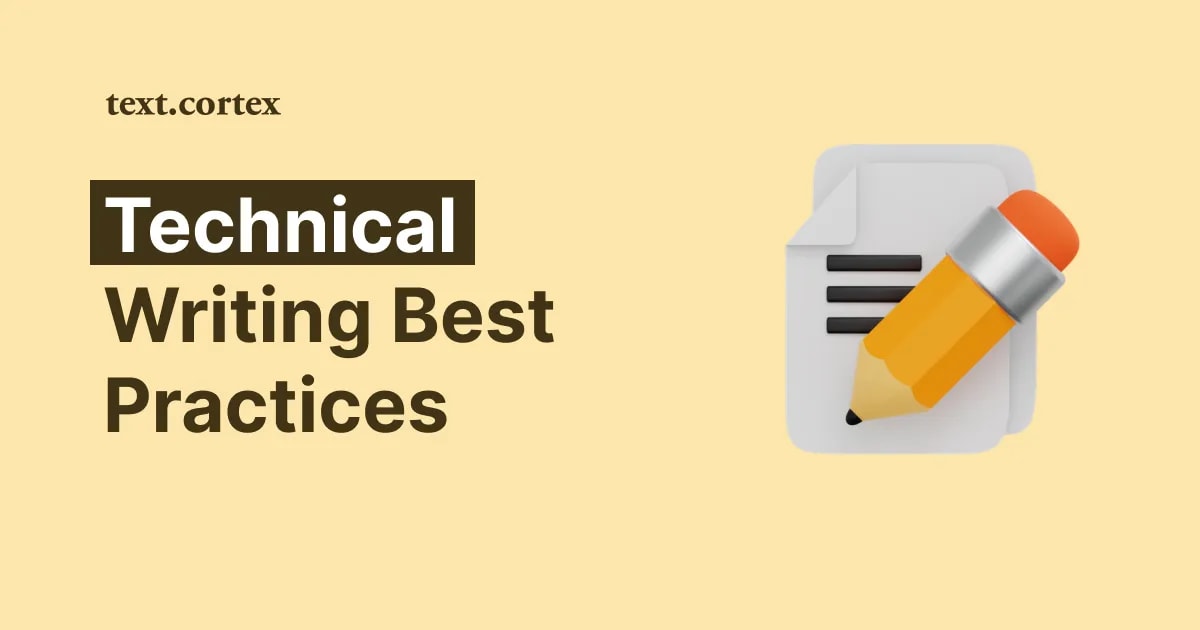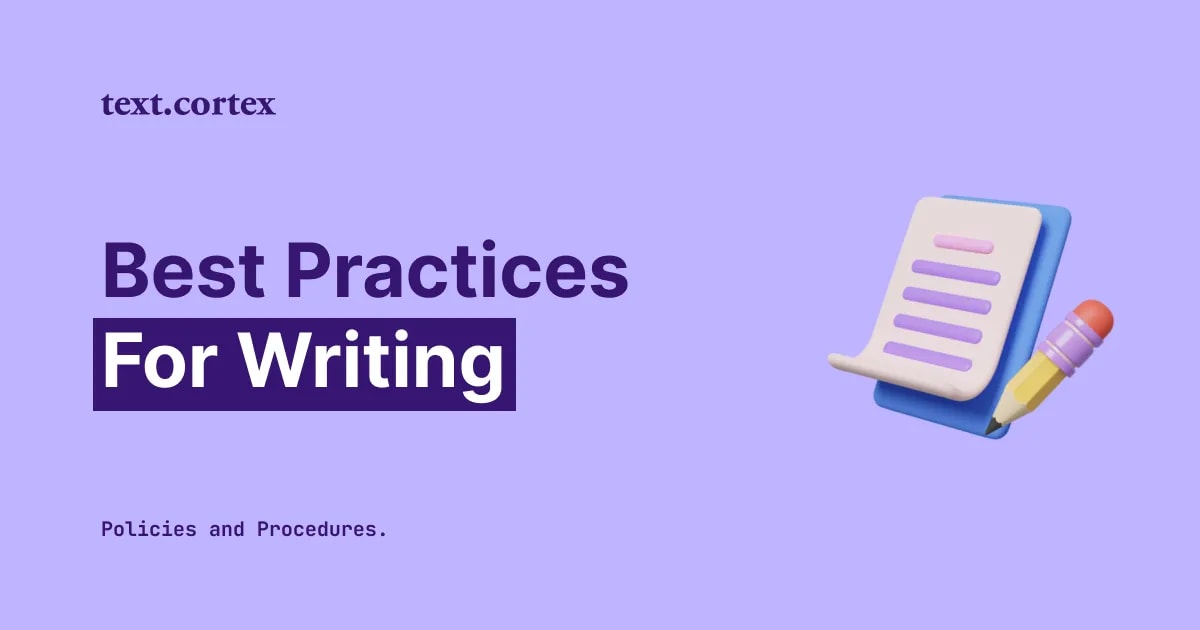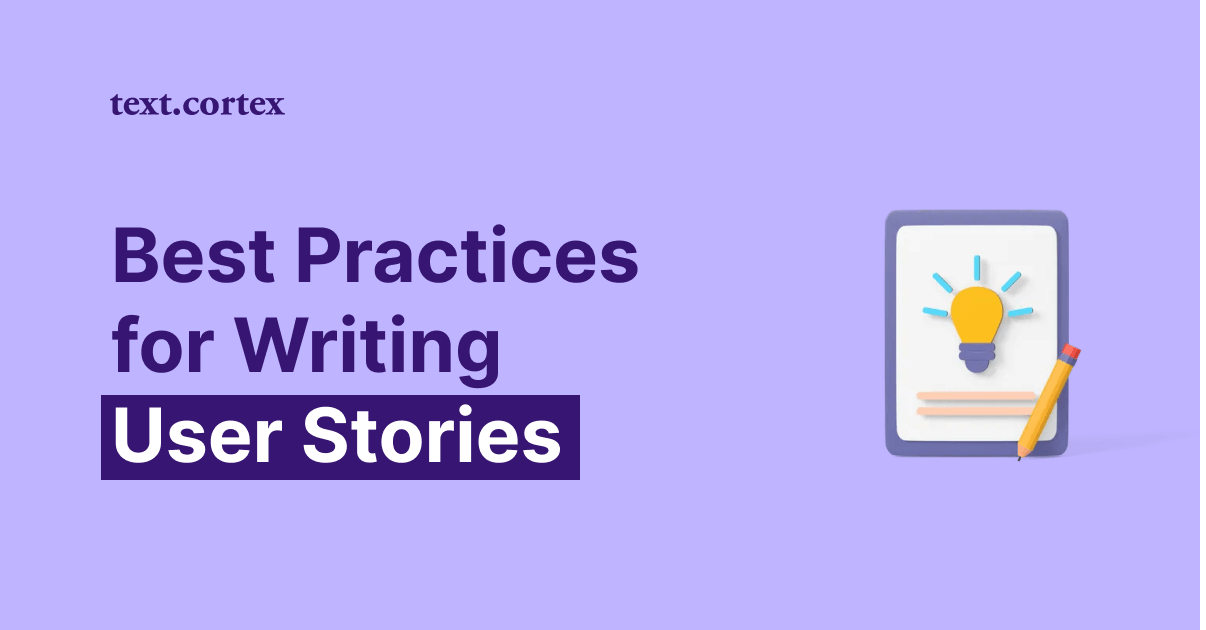Have you ever read an article and had more questions than answers at the end?

We've all been there, whether you're researching a new industrial method or looking into the most recent product release.
Well, if you want to prevent the confusion effect for your audience, you've come to the perfect spot.
In this article, we present technical writing best practices that will not only teach you how to write effectively but also provide a reader-friendly experience.
At the end of the article, a secret for better writing is waiting for you!
Let’s dive in!
What Is Technical Writing?
Technical writing is a type of writing that is used in many different industries to concisely convey complex information.
The main objective is to make things easier to understand so the reader can behave in a certain way or decide what to do.
Technical articles frequently seek to:
- Offer insights.
- Offer analysis.
- Provide updates on developing technology.
- Show trends.
Technical writing in the form of articles is a useful way for professionals and technical communities to share knowledge and skills, whether it takes the shape of blog entries, magazine articles, or online publications.
7 Technical Writing Best Practices To Implement
1. Understand Your Audience
Determine who should be reading your content and make sure it caters to their individual requirements and expertise levels.
Since the goal of technical writing is to inform and educate, it's critical to ascertain the level of end users' prior knowledge.
This will assist you in customizing the style, tone, and content to the target audience.
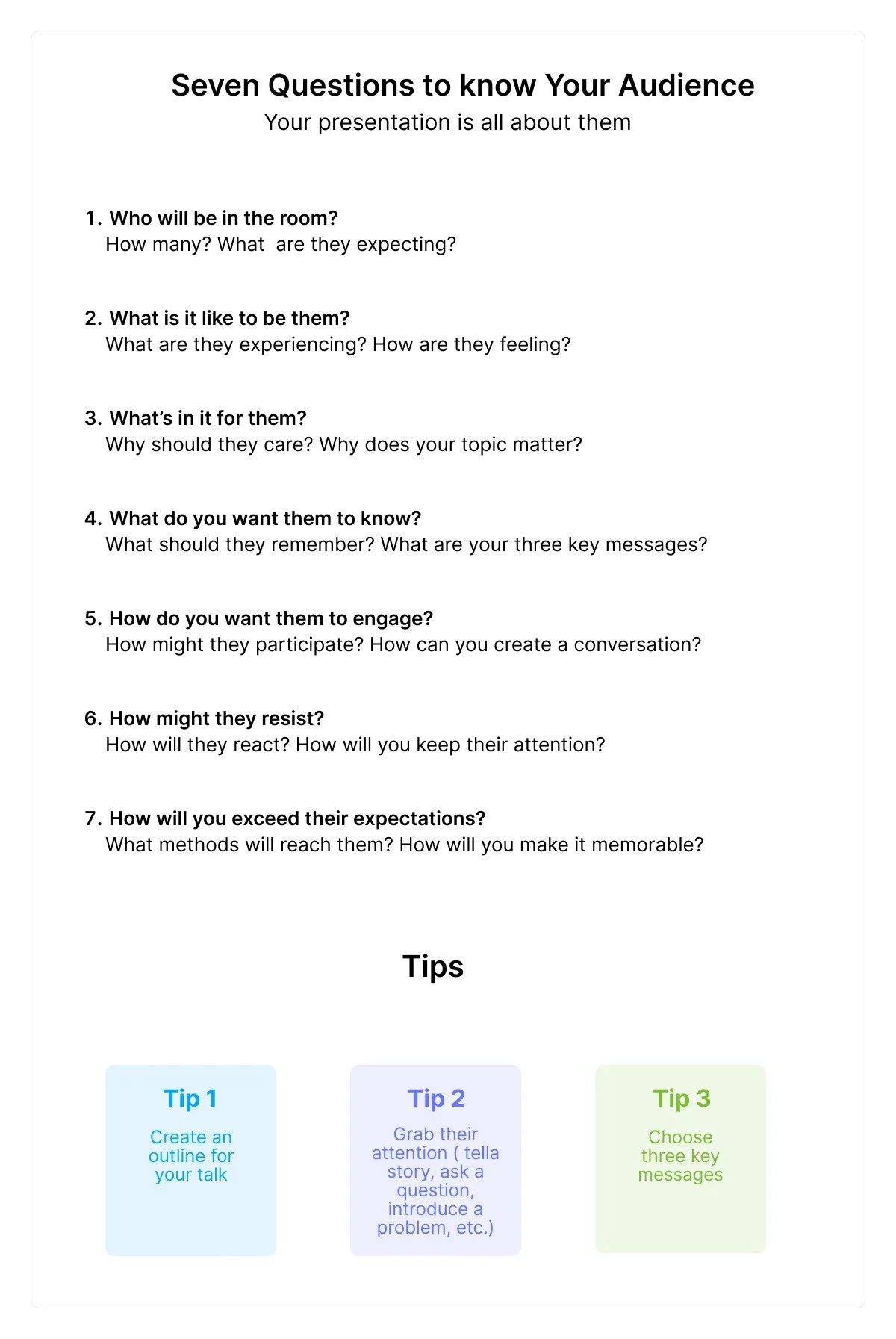
For example, imagine authoring a step-by-step lesson for end users of a new AI tool as opposed to a troubleshooting guide for IT specialists.
IT experts undoubtedly possess far greater knowledge, and in both the first and second cases, you won't employ the same language or provide an equivalent amount of explanation.
💡ProTip
By blending your background and description details with a simple text sample, TextCortex generates a digital persona that sounds like you and writes in your style.
You can also select one of the existing personas; the choice is yours.
2. Thoroughly Research the Topic
Remember, if you are writing technical content you have to represent yourself as an expert in that field.
The only way to achieve this is to conduct thorough research on the subject and gain a deep understanding of it.
Here's how to thoroughly research a topic and demonstrate your expertise:
✔️Gather background information - Begin with general background information about the issue.
✔️Use credible sources - Reliable sources are academic publications, books by recognized specialists, official documentation, and reputable websites.
✔️Identify key concepts and terminology - This will allow you to communicate successfully with your readers and utilize appropriate terms in your work.
✔️Check the information - Ensure the information you collect is updated and relevant.
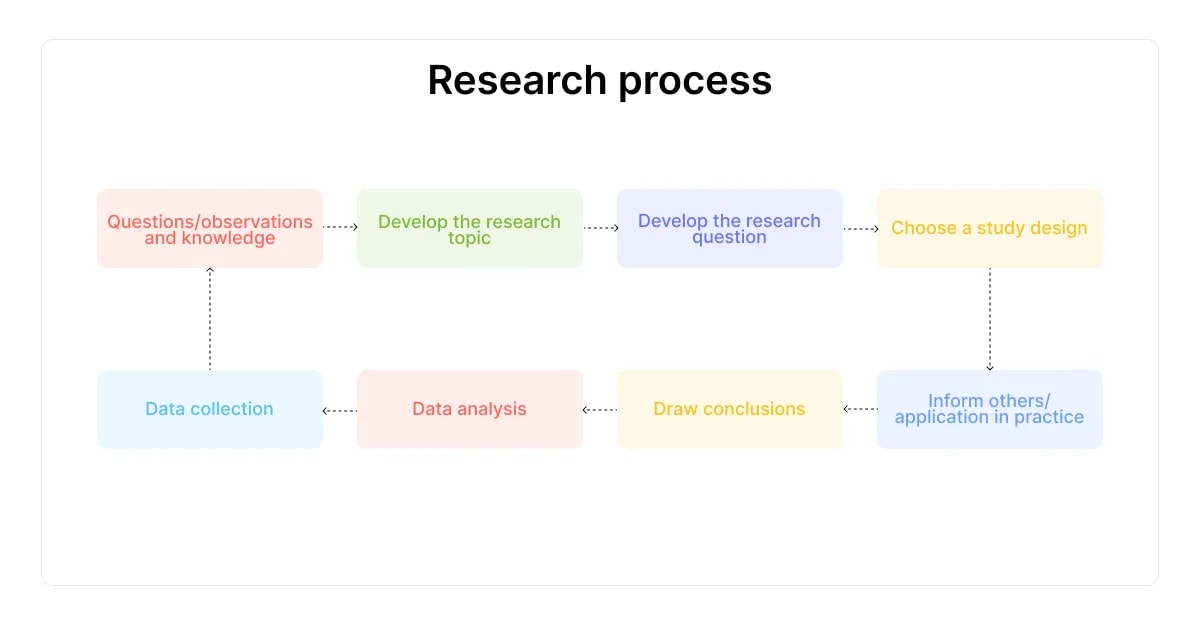
Technology and industries change, therefore employing outdated knowledge may result in mistakes in your writing.
📌Bonus Tip
Research today, and write tomorrow.
Why?
Because of the clarity of your thoughts.
Leaving a gap between research and writing helps you to revisit your findings with a critical eye during the writing process.
💡ProTip
TextCortex can lend a hand in researching as well!
It simplifies the process of summarizing lengthy web pages by compressing them into a single paragraph for simpler understanding.
You can also create a knowledge base with all web sites from your research, where you can raise questions and start arguments across numerous articles.
3. Create an Outline
If you construct an outline of your writing first, you may reduce the chance of it being difficult to follow or creating a sense of scattered ideas.
It is especially important in technical writing where your task is to educate people or provide information.
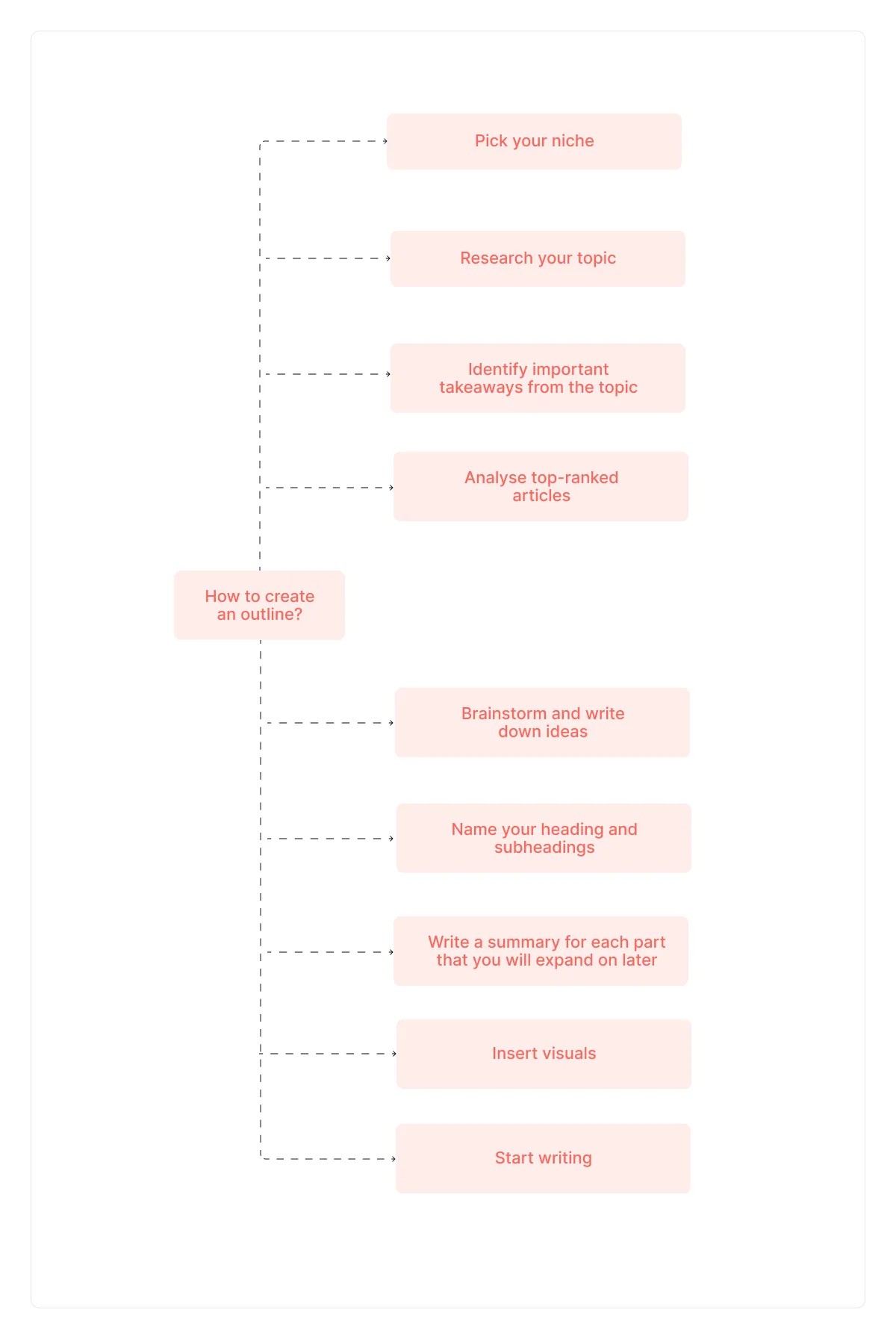
💡ProTip
Use Textcortex to build an outline or to write more cohesive content that better explains the subject.
To do that, follow these steps:
1. Task Zeno Chat with outlining your chosen topic, and you will get smaller sections.
2. Copy them in your textbox.
3. Highlight the section you want to work on.
4. Click “B” to get simplified, cohesive, and plagiarism-free text.
4. Make It Easy to Digest
Here’s the rule - if you have to read a sentence more than once to understand it, change it.
People won’t put an effort into reading your text if it is hard to follow.
There are two ways of achieving readability in your text:
- Break the wall of text
- Make your text skimmable
Let's take a look at how to apply this technical writing practice.
How to Break the Wall Of Text?
Breaking up the text using visuals, or bullet points improve readability and engagement.
It will not only make your text easier to digest, but it will also help readers understand important aspects in your message.
Try implementing these elements:
✔️Use visuals - Visuals can help improve comprehension and provide a fast summary of difficult concepts.
✔️Use bullet points and numbered lists - This helps to convey information in a digestible way, making it easier for readers to follow.
✔️Use tables and charts - Tables and charts can be very useful for presenting complex information in an organized manner.
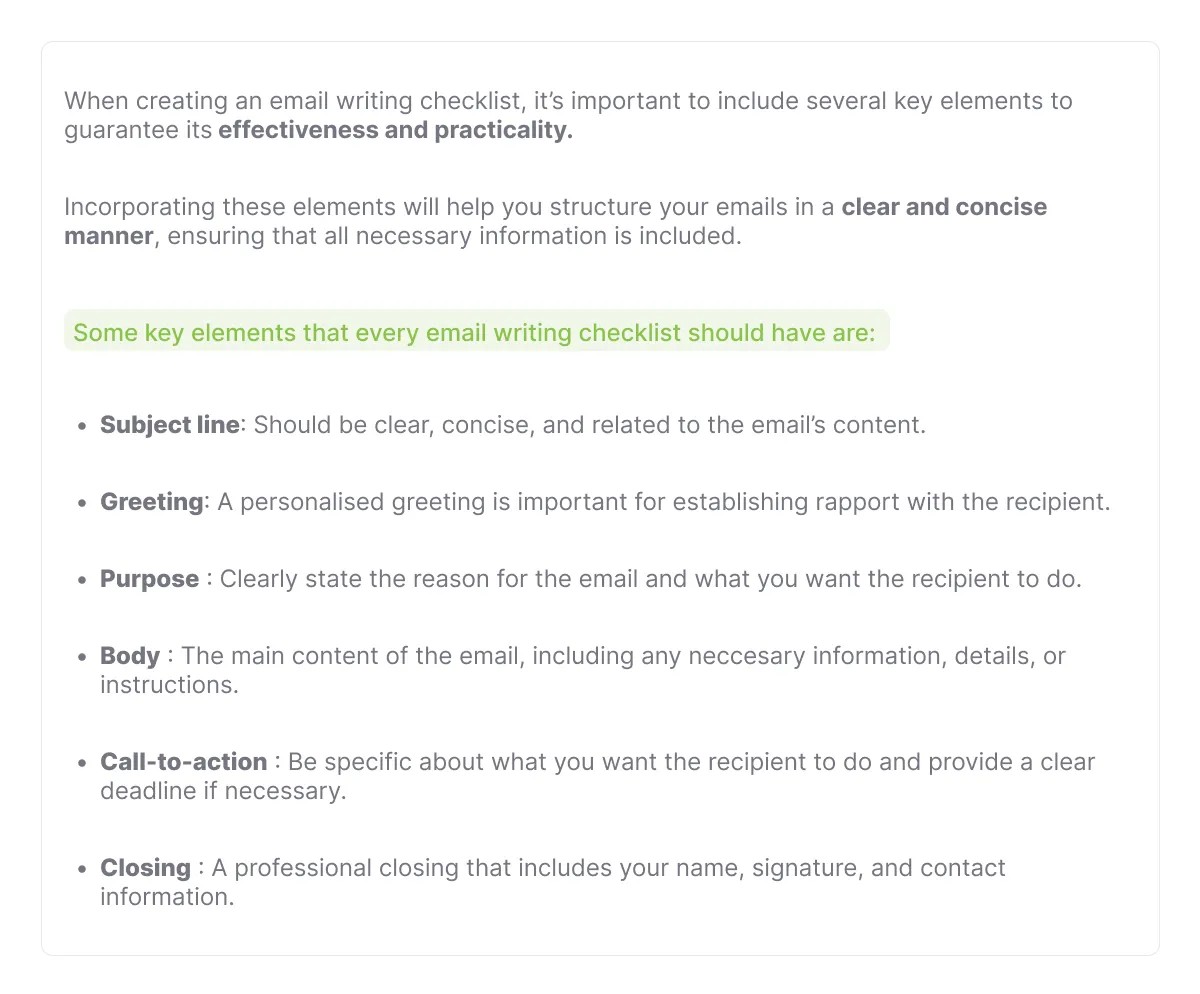
How to Make Skimmable Text?
Making a text skimmable also improves the readability of your text.
Visual structure not only attracts and holds the reader's attention, but it also aids information scanning.
Readers can identify and understand key points in your message much easier.
Add these:
✔️Add whitespace - Proper space between paragraphs, sections, and images reduces visual clutter while improving readability.
✔️Use consistent formatting - Maintain consistent font, style, and formatting. Consistency gives the document a professional image and makes it easier to navigate.
✔️Add multiple sections - Divide your text into parts with distinct headers and subheadings. This allows readers to rapidly find the information they need and browse the document efficiently.
✔️Highlight key points - Use bold or italicized text to emphasize key points. This highlights critical information and allows readers to focus on key aspects.
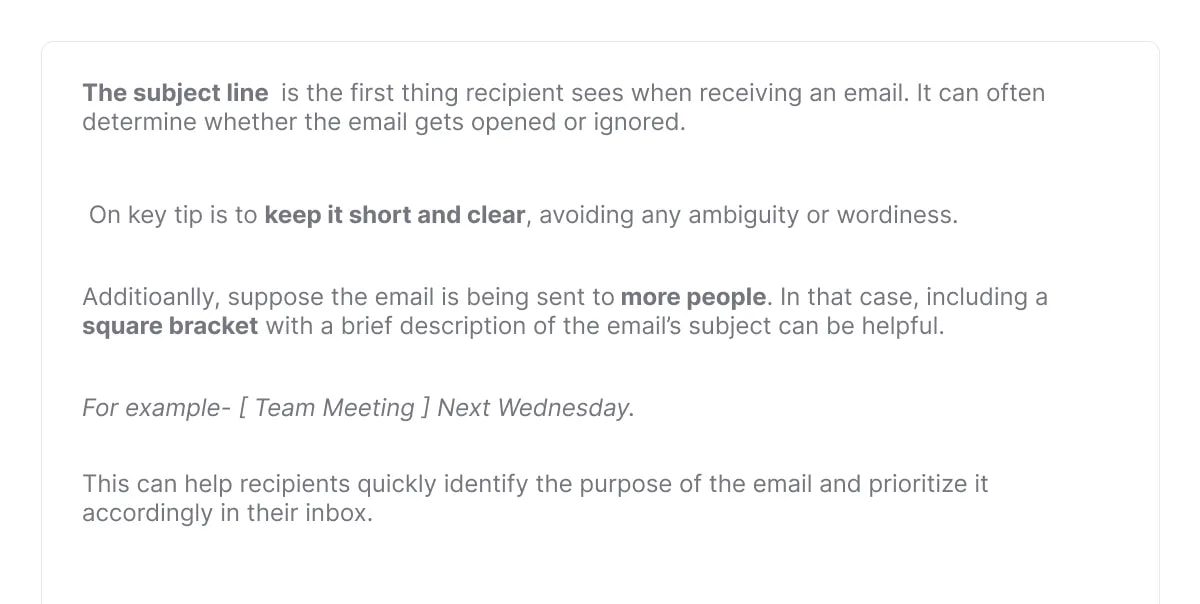
5. Use Active Voice
Maybe passive voice sounds more professional, but try not to make it one of your technical writing practices.
Using active rather than passive voice is a better choice in technical writing for various reasons:
✔️ Clarity
Active voice makes sentences more concise and direct.
For example:
Passive: "The new algorithm was implemented by the development team."
Active: "The development team implemented the new algorithm."
✔️ Conciseness
Active voice often results in shorter sentences. This is especially useful in technical writing, where brevity and precision are crucial.
For example:
Passive: "A decision was made by the project manager after careful consideration."
Active: "After careful consideration, the project manager made a decision."
✔️ Readability
Active voice maintains a flow that can keep the reader's attention, which is important in technical writing that may be complex.
For example:
Passive: "The research findings were analyzed by the data scientists."
Active: "Data scientists analyzed the research findings."
6. Pay Attention To the Grammar
There is no faster way to ruin your integrity than having grammar or spelling mistakes in the text.
Good grammar and spelling improve the overall professionalism of your technical content.
An error-free document boosts your trust and demonstrates a dedication to quality.
Technical writing frequently requires providing specific facts, directions, and information.
Correct grammar and spelling to guarantee that your information is credible and trustworthy.
💡Pro Tip
Zeno Chat is excellent at creating material with perfect language and free of errors.
The platform's powerful language processing guarantees that the created text not only meets grammatical requirements, but also conveys a professional tone, without any spelling errors.
7. Keep it up-to-date
Products and processes change throughout time, thus it is critical to keep your content up to date in order to provide accurate information.
If you pay attention to it, it can lead you to:
✔️Reduced user frustration - Users can become frustrated, and make mistakes while using outdated information. Regularly updating material reduces these concerns, resulting in a better user experience.
✔️Competitive Advantage - It is more likely that users will choose products and services that include up-to-date support resources.
✔️Improved relevance - Users are more engaged with content that corresponds to their current needs, and regular updates ensure that technical documentation remains relevant.
To Wrap Up
Technical writing isn’t just about delivering facts—it's about becoming a trustworthy source.
To accomplish this, accuracy and keeping your content up to date are non-negotiable.
Luckily for you, there is an easy way to incorporate all of these technical writing best practices.
Meet TextCortex!
How TextCortex Can Help You In Technical Writing?
The TextCortex online app and Chrome extension allow you to:
🖊️ Write better and more efficiently.
⏱️ Generate short, and long-form articles in seconds.
📑 Craft bulk, short and long, content.
✏️ Rewrite your text.
✅ Produce grammatically correct content.
📧 Write emails from bullet points.
🧑💻 Create a persona to maintain your desired style and tone.
👍 Make SEO-optimized content.
Sounds interesting?
Get started now and embrace the convenience of quick content creation from this very moment!

